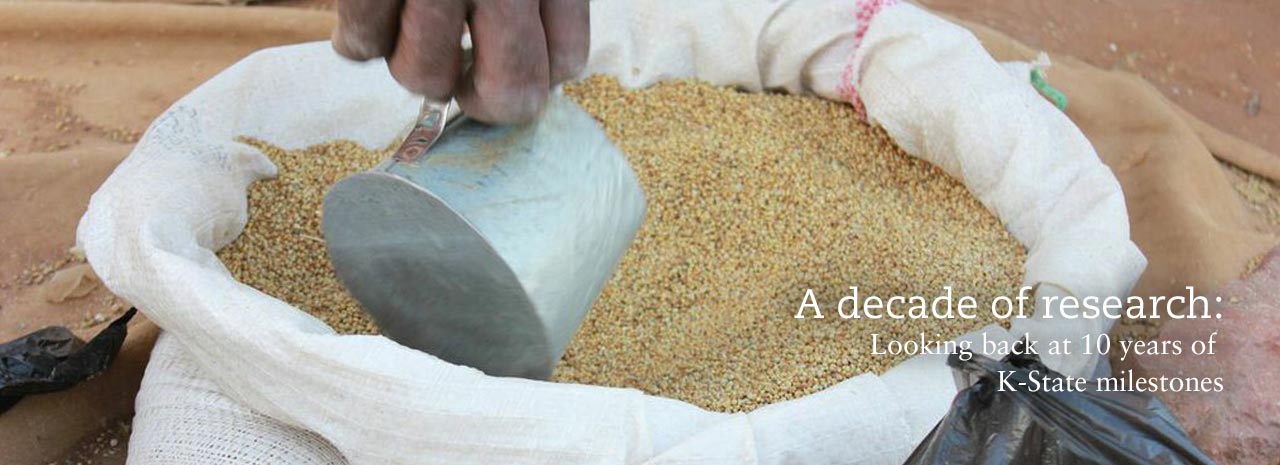A decade of research: Looking back at 10 years of K-State milestones
By Jennifer Tidball
It’s been a busy decade for Kansas State University researchers.
Since 2010, K-State researchers have studied infectious diseases, tackled global food insecurity and created new research centers and laboratories. They have achieved international recognition and have been at the forefront of the latest scientific developments and creative discovery.
These researchers have continued the university’s land-grant mission to serve communities at home and across the globe — a key piece of the K-State 2025 visionary goal to be a premier, student-centered, public research university by 2025.
Read more about 10 of the biggest research achievements of the past 10 years.
Biosecurity
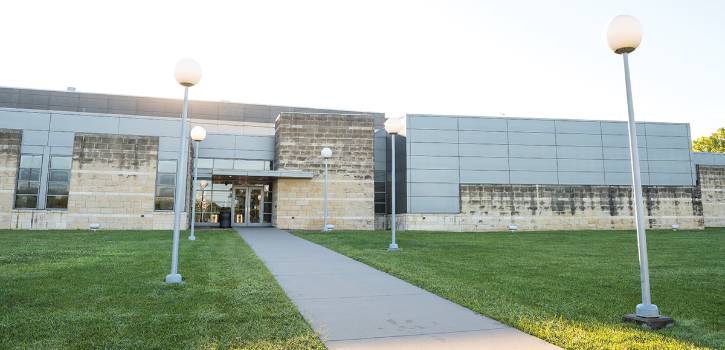
The Biosecurity Research Institute, or BRI, opened in 2007, and in 2009, Manhattan was selected as the site for the federal National Bio and Agro-Defense Facility, or NBAF. In the decade that followed, K-State has become the “the Silicon Valley for Biodefense,” according to Tom Daschle, former majority leader of the U.S. Senate and member of the Blue Ribbon Study Panel on Biodefense.
Scientists across the university have studied H1N1 virus, Zika virus, African swine fever virus, West Nile virus, avian influenza, wheat blast fungus and many other infectious diseases. Many of these projects will jump-start research at NBAF when it becomes operational in the next decade.
The university has continued to maintain numerous biosecurity-related facilities, research collaborations and academic programs, including the BRI, which is biosafety level-3 facility devoted to comprehensive infectious diseases research and training; the Center of Excellence for Emerging and Zoonotic Animal Diseases, which the U.S. Department of Homeland Security created in 2010 at K-State; the National Agricultural Biosecurity Center; and the K-State Plant Disease Diagnostic Lab, among many other organizations and partnerships. See page 26 to learn how researchers are using many of these K-State facilities to study COVID-19.
K-State Olathe
The K-State Olathe campus opened in 2011 as a Kansas City-area hub for research on human and animal health, food innovation and sensory analysis.
There have been many successes in its first decade. The 1Data collaboration formed in 2017 by K-State and the University of Missouri- Kansas City and includes multiple projects that use big data to improve human and animal lives. Many startup and brand name companies have scaled up operations and developed or refined new products with the Food Innovation Accelerator. Local and Fortune 500 companies use the Sensory and Consumer Research Center to study food and consumer products and improve them. The Postharvest Physiology Lab helps local and national growers improve their produce and is helping Kansas hemp farmers tap an emerging economic market. See page 36 to learn more about industrial hemp research.
K-State Polytechnic
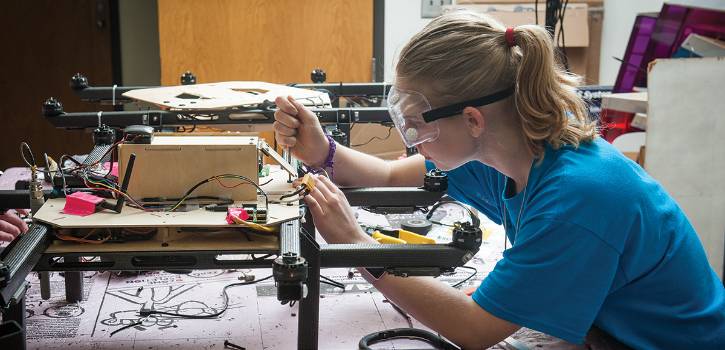
The K-State campus in Salina has evolved in the past decade and built research programs focused on aviation, unmanned aircraft and bulk solids. A 2015 name change to the Kansas State University Polytechnic Campus reflected this evolution.
The K-State Polytechnic Applied Aviation Research Center is engaged in research that promotes the commercialization of unmanned aircraft. The center has been involved in validating unmanned aircraft standards for the Federal Aviation Administration, exploring unmanned aircraft as tools for inspecting power lines or wind turbines and using unmanned aircraft to map natural resources. The Bulk Solids Innovation Center focuses on testing, storing and transporting bulk solids, which are loose, dry commodities such as pellets, granules, powder, grain and recycled plastics. The center opened in a new facility in 2015 and is the only one of its kind in North America.
Feed the Future Innovation Labs
Beginning in 2013 and over the course of 14 months, K-State was named the winner of four highly competitive grants totaling more than $100 million from the U.S. Agency for International Development, or USAID. The grants established four Feed the Future Innovation Labs: the Feed the Future Innovation Lab for Collaborative Research on Sorghum and Millet, the Feed the Future Innovation Lab for Applied Wheat Genomics, the Feed the Future Innovation Lab for the Reduction of Post-Harvest Loss and the Feed the Future Innovation Lab for Sustainable Intensification.
The Feed the Future Innovation Labs are global collaborations among universities, industry and nongovernmental organizations. The labs focus on ending world hunger by improving the resiliency and production of food crops as well as preventing crop losses in grain-producing countries. The labs address these challenges through a combination of research, education and outreach in target nations.
The Edge Collaboration District
The northern edge of the Manhattan campus was largely undeveloped land in 2010. In the past 10 years, it has become a hub of industry, research and university collaboration. The area became known as the North Campus Corridor, and in 2020 was renamed the Edge Collaboration District, which is a partnership between K-State and the Kansas State University Foundation.
More than a dozen partners and six academic colleges are represented in the Edge Collaboration District, and more are expected. Some of these partners include the city of Manhattan, the K-State Research Park, the K-State Office Park, the National Bio and Agro-Defense Facility, the Biosecurity Research Institute, the Kansas Department of Agriculture, the College of Veterinary Medicine, the College of Agriculture Grain Science and Industry Complex, the Kansas Wheat Commission and the National Science Foundation I/UCRC Wheat Genetics Resource Center.
CRISPR technology
CRISPR-Cas9 technology was introduced in 2012 and has since revolutionized the scientific world. The 2020 Nobel Prize in chemistry was awarded to the scientists who developed the gene-editing technology.
K-State researchers have used CRISPR technology to ethically and responsibly combat some of the world’s most devastating animal and plant diseases. College of Agriculture plant pathologists are developing wheat varieties with improved traits, such as having higher yields or being more drought tolerant. A biochemistry and molecular biophysics team in the College of Arts and Sciences is studying gene drives through the model system of yeast. College of Veterinary Medicine researchers have used the technology to fight animal diseases such as African swine fever and porcine reproductive and respiratory syndrome.
Konza Prairie Biological Station
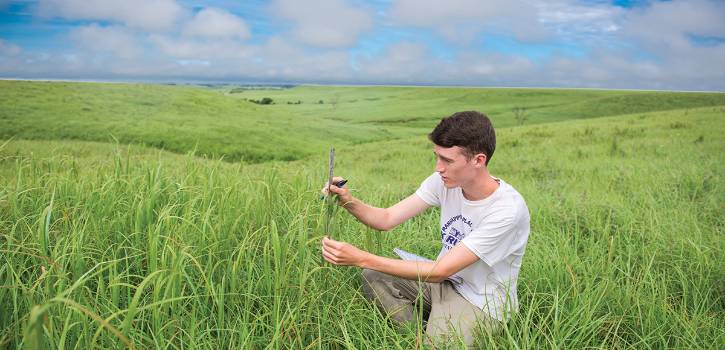
In 2010, the Konza Prairie Biological Station was named one of the Eight Wonders of Kansas Geography by the Kansas Sampler Foundation. In addition to beautiful views of untouched tallgrass prairie, the 8,600-acre Konza Prairie is also the site of long-term ecological research, from burning and grazing techniques to all aspects of the grassland ecosystem: flowers, soil, water and wildlife.
The Konza Prairie has been a National Science Foundation Long-Term Ecological Research site for more than 45 years and it continued to received funding renewals in 2014 and 2020. The Konza Prairie is jointly owned by K-State and The Nature Conservancy and is managed by the Division of Biology in the College of Arts and Sciences.
CNAP Center
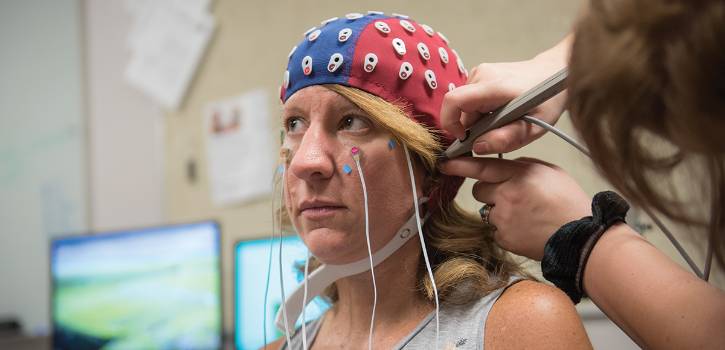
In 2017, the National Institutes of Health awardeda nearly $11 million Centers of Biomedical Research Excellence, or COBRE, grant to establish the K-State Cognitive and Neurobiological Approaches to Plasticity Center, or CNAP. It is the largest grant in the history of the psychological sciences department and marked the second time that K-State has received a COBRE grant.
The statewide center aims to understand the human brain and how it changes. More than 63 collaborators, including University of Kansas and Wichita State University researchers, are involved with CNAP and are conducting cognitive, behavioral and neurobiological research on topics such as self-control, alcohol abuse, aging, hearing, memory loss and learning.
Sensory Analysis Center
The K-State Sensory Analysis Center has investigated sensory analysis and worked with companies across the globe for more than 30 years. In 2015, the center was named the top in the world for sensory analysis research influence by the Journal of Sensory Studies.
The Sensory Analysis Center conducts more than 50 studies every year. At the Manhattan and Olathe campuses, faculty, students and panelists conduct consulting, education and consumer research on a variety of products and topics: food, beverages, cosmetics, fabrics, packaging, paints, personal care products and fragrances, as well methodologies and food safety.
Global Food Systems Initiative
In the past decade, K-State began the Global Food Systems Initiative to focus on what will become a critical challenge in the coming decades: feeding the rapidly growing world’s population, which will grow to an estimated 9.6 billion people by 2050.
The K-State research initiative aims to solve global food challenges through innovation, outreach and workforce development. K-State has been preparing for this challenge for decades, and it is a challenge that harkens back to the university’s land-grant mission when it was founded many decades ago.
What's next?
Infectious disease research: The COVID-19 pandemic has made it even more evident that infectious disease research will continue to play a critical role in the coming years. See page 26 to learn more about how K-State is fighting the coronavirus pandemic.
Center on Emerging and Zoonotic Infectious Diseases: In 2020, K-State received its third National Institutes of Health Centers of Biomedical Research Excellence grant. The $11 million in funding established the new Center on Emerging and Zoonotic Infectious Diseases. See page 11 to read more about the new research center.
3D printing: 3D printing has dramatically improved, and artists, researchers and scholars continue to use this technology across the university, from the art department in the College of Arts and Sciences to the Carl R. Ice College of Engineering and the College of Architecture, Planning & Design.
Chapman Center for Rural Studies: The center’s focus on strengthening rural Kansas communities will play a key role as rural communities evolve in the next decade.
Health sciences: The recently renamed College of Health and Human Sciences is setting the stage for new research, education and outreach that promotes the well-being of individuals, families and communities.
Beach Museum of Art: The collection at the Marianna Kistler Beach Museum of Art has grown to more than 10,000 objects that highlight Kansas and regional art. The museum will celebrate its 25th anniversary in 2021.
